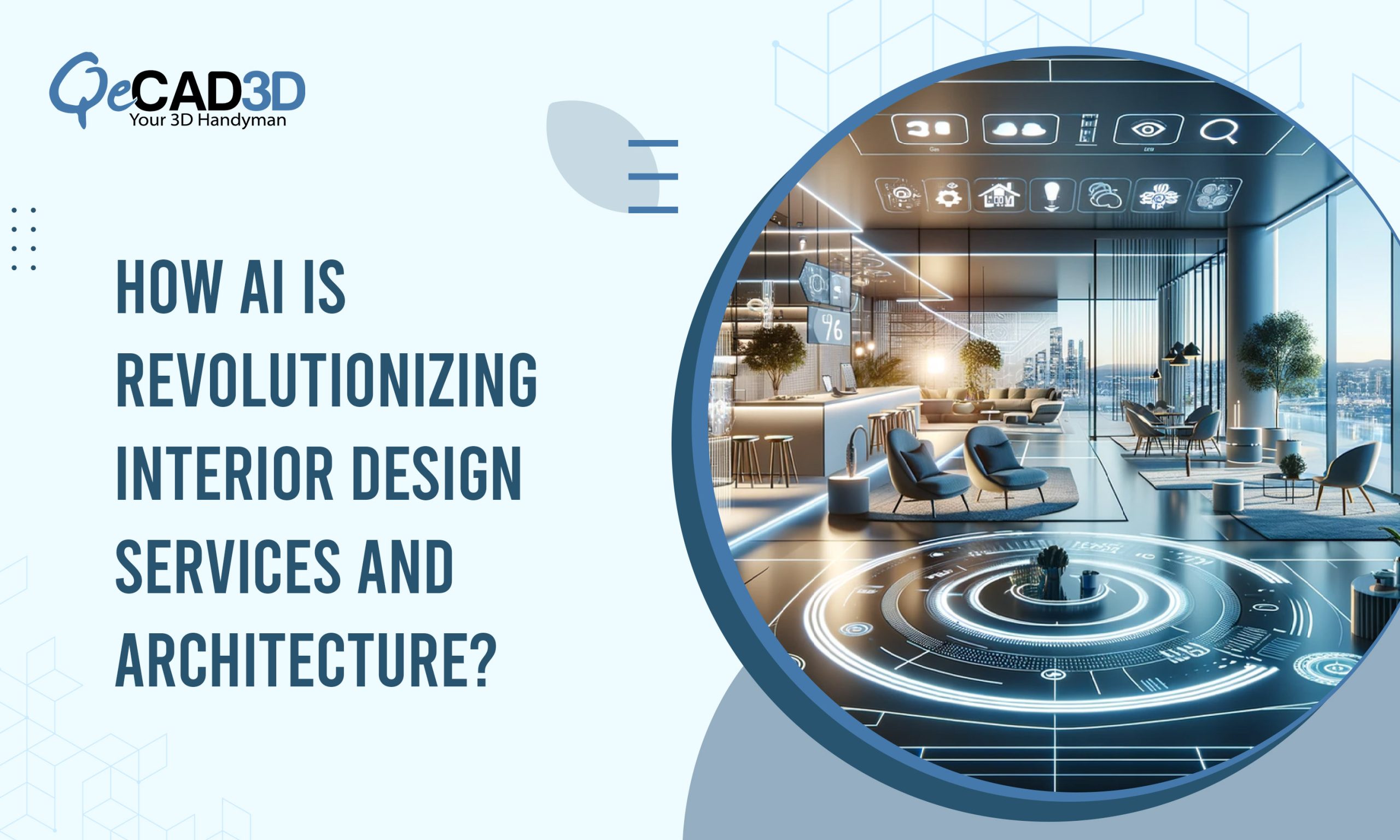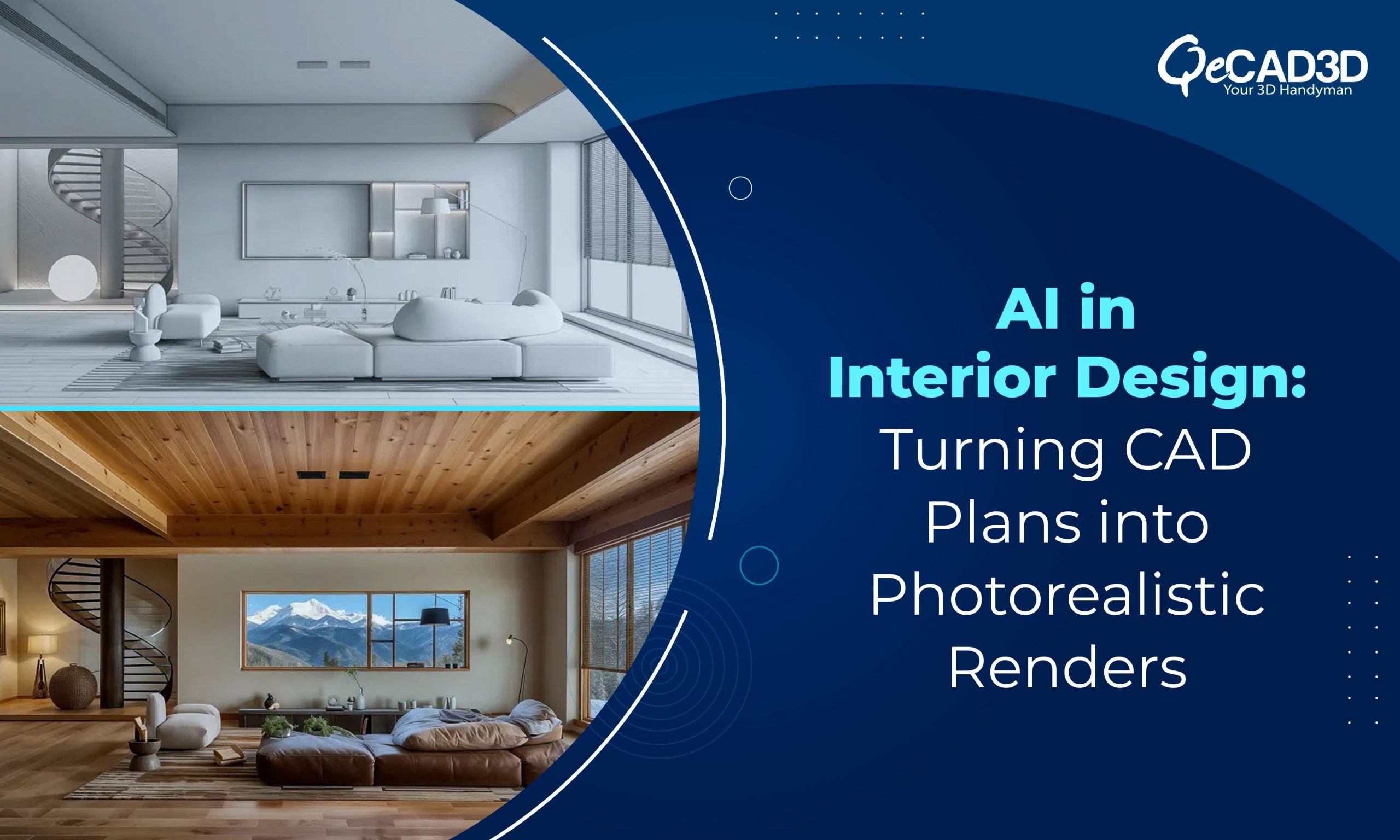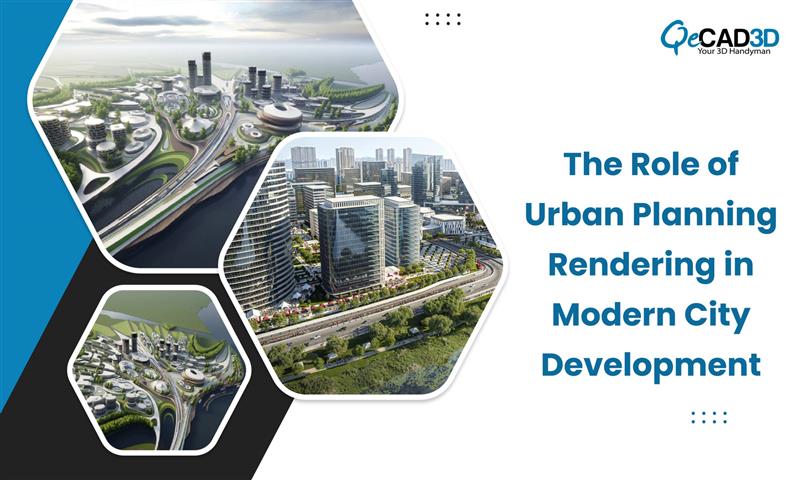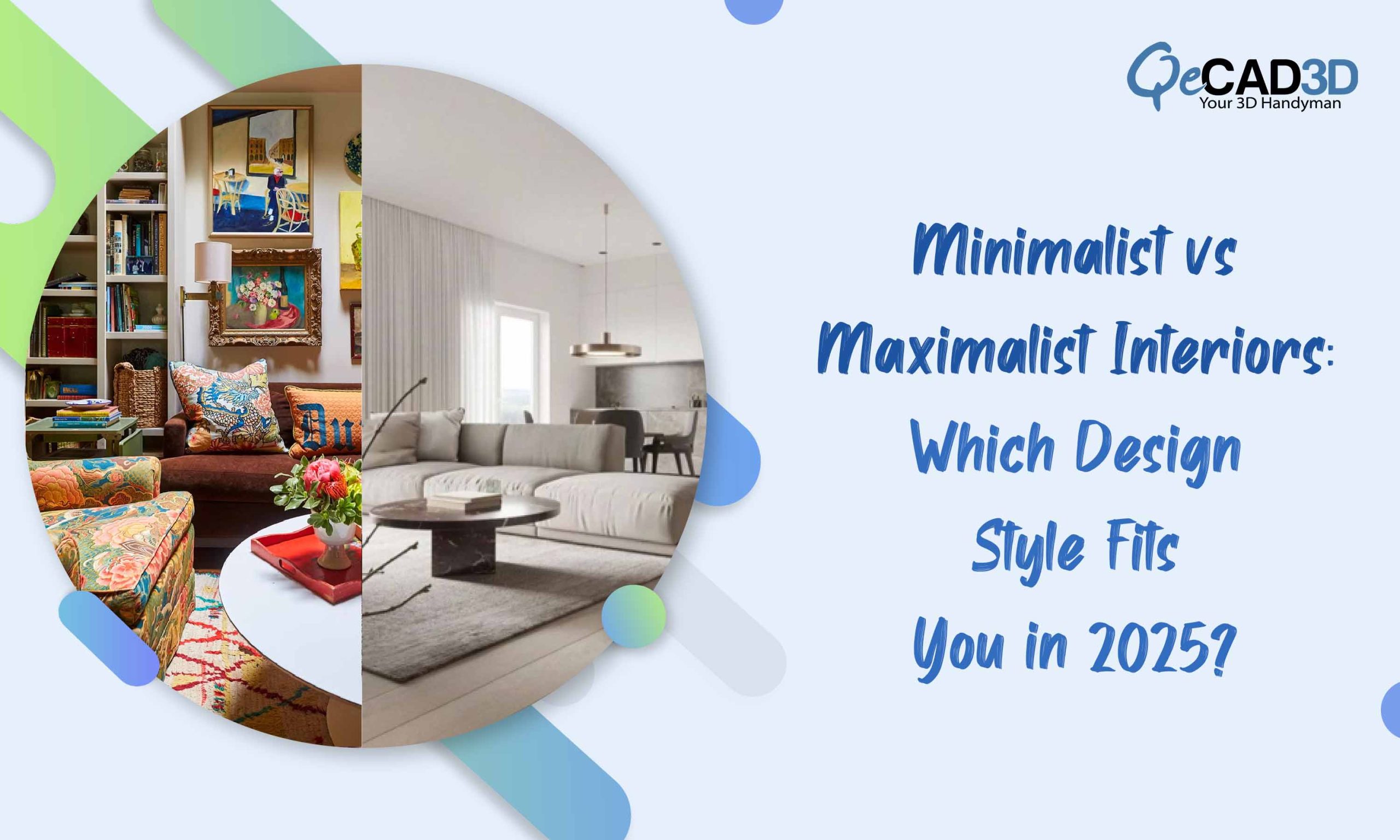How AI is Revolutionizing Interior Design Services and Architecture?
The world of interior architecture and design is undergoing a radical transformation. What once began as a DIY (Do It Yourself) movement fueled by the design blogs and Pinterest boards is now being revolutionized by Artificial Intelligence (AI). From concept to execution, AI is reimagining how spaces are designed, customized and experienced.
In this blog, we’ll explore how AI is reshaping the interior architecture and design empowering the professionals, simplifying the client collaboration and offering hyper-personalized solutions that go far beyond what the traditional methods ever could.
The DIY Era: Democratizing Design
The rise of the internet and easy-to-use design software gave birth to the DIY interior design era. Platforms like Houzz, Pinterest and Canva enabled the homeowners to experiment with the layouts, colour schemes and décor themes on their own.
However, while the DIY tools made the design more accessible they often lacked technical precision, context and deep personalization. This is where AI steps in and that too not to replace the creativity, but to amplify it.
The AI Revolution: Precision Meets Personalization
AI is no longer just a buzzword in design, it’s a game-changer. Here’s how:
1) AI-Powered Design Assistance
Tools like Interior AI, Planner 5D and Autodesk Revit’s AI integrations helps the designers to visualize the ideas in the real-time. Users can upload a photo of a room and AI suggests the layouts, furniture and even the lighting schemes based on the room’s dimensions and style preferences.
2) Smart Space Planning
AI can optimize the floor plans based on the natural light, traffic flows and functional zoning. It uses the data-driven insights to recommend the best placement for the walls, furniture and utilities hence reducing the costly errors and reworks during the construction.
3) Personalized Aesthetics at Scale
AI algorithms can analyse the user behaviour, lifestyle data as well as the design preferences to generate the tailored style boards, mood palettes and material suggestions. This ensures that every design is not just functional but emotionally resonant for the end user.
4) Virtual Staging & Augmented Reality
Designers can now use AI and AR to create the immersive walkthroughs of the proposed designs. Clients no longer have to guess how a concept will look, they can see it, move through it and interact with it virtually before a single nail is hammered.
5) Sustainable Design Optimization
AI tools can also analyze the materials, energy usage as well as carbon footprint offering eco-friendly alternatives without compromising on the design integrity. This is becoming increasingly critical as sustainability takes centre stage in the industry.
The Impact on Interior Design Services
For firms offering Interior Design Services, AI is enhancing the client engagement increasing the design accuracy and shortening the delivery timelines. What used to take weeks of manual work can now be simulated, tested and presented in just a few hours.
AI Meets Architectural Rendering Services
When combined with the Architectural Rendering Services, AI-generated outputs enable the highly realistic and interactive 3D visualizations. This allows the stakeholders to make informed decisions earlier in the design process thereby minimizing the back-and-forth revisions and aligning the vision with the execution more effectively.
Benefits for Designers and Clients Alike
- Faster Iterations: AI reduces the time taken to create and revise the design drafts.
- Cost Efficiency: Smarter planning leads to the reduced material wastage and fewer change orders.
- Improved Collaboration: The clients can now engage more meaningfully with the 3D visualizations as well as AI-generated options.
- Creative Liberation: The designers are freed from the repetitive tasks and they can focus more on the innovative tasks.
From Assistant to Co-Creator: The Evolving Role of AI
It’s important to note that AI isn’t here to take over from human designers; it’s here to work with them. Designers still bring empathy, storytelling and cultural sensitivity to the table and all the elements that no algorithm can replicate. AI augments this with speed, data analysis and predictive accuracy.
Looking Ahead: What’s Next in AI-Driven Interior Architecture?
- Generative Design: AI will evolve to not just suggest but create the entire design ecosystems based on the parameters like budget, location and use-case.
- Voice-Based Design Tools: Imagine describing your dream space aloud and watching it materialize in a 3D model.
- AI-Powered Design Marketplaces: Automated platforms may soon connect the clients with the design professionals based on the AI-analyzed compatibility.
Conclusion
From mood boards to the machine learning, the interior design journey has come a long way. As we transition from the DIY to AI, the fusion of technology and creativity is unlocking the possibilities that were once unimaginable.
For the interior architects and designers embracing AI means staying ahead of the curve offering smarter, faster yet more personalized spaces that reflects the future of living.
The next chapter of design isn’t just about replacing the human element—it’s enriching it with the intelligent technology.






